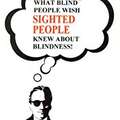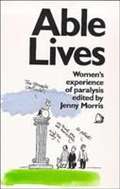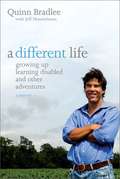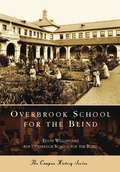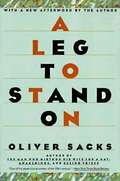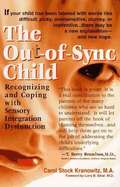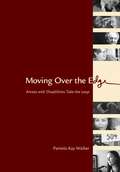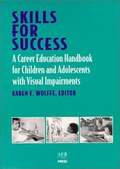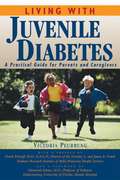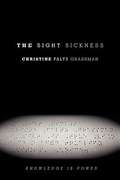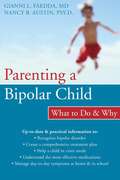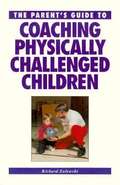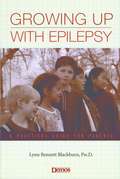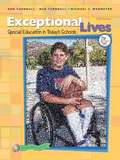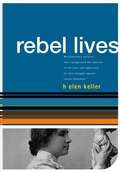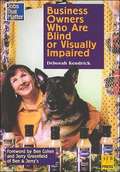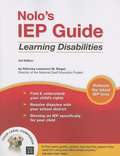- Table View
- List View
What Blind People Wish Sighted People Knew About Blindness! (Revised Edition)
by Harry Martin<P>Harry Martin became blind as the result of an eye disease he contracted while serving in the Navy in 1973. His eye condition began as a case of severe visual impairment, and progressed to total blindness over a period of twenty years. Harry lives with his wife, Carol, and his guide dog, Frankie in Orlando, Florida. <P>THIS BOOK IS A MUST READ FOR ALL SIGHTED PEOPLE! <P>Whether you know a blind person or not, you must read this book. The reader will gain a new understanding of what it is like to be blind, and to go blind. Find out why some blind people can see. Learn how guide dogs work. Discover how blind people do things without sight. If you have a blind relative, friend, spouse, or co-worker; this fascinating book will tell you how to relate to them better. Teachers, this book is an outstanding educational tool. Use it to teach your students all about blindness and the blind.
Able Lives: Women's Experience of Paralysis
by Jenny MorrisThis is a book written by spinal cord injured women who want to share their experiences with newly injured women and their friends and relatives, and to impress our concerns upon the general public and professionals. It is part of a growing movement to bring disability issues which previously have been kept private - behind the closed doors of individual lives - out into the open. We hope there will be many more books like this one to follow.
Eyes of a Stranger
by Sharon E. HeiselMarissa, a shy self-conscious girl with a twisted leg, is attracted to a strikingly handsome visitor to her uncle's carousel but begins to suspect that he is a psychotic serial killer.
A Different Life: Growing Up Learning Disabled and Other Adventures
by Quinn Bradlee Jeff HimmelmanBorn with a hole in his heart that required invasive surgery when he was only three months old, Quinn Bradlee suffered from a battery of illnesses: seizures, migraines, fevers from an early age. But it wasn't until he was fourteen that Bradlee was correctly diagnosed with Velo-Cardio-Facial Syndrome (VCFS), a widespread, little-understood disorder that is expressed through a wide range of physical ailments and learning disabilities. Ten percent of the population is affected by a learning disability, but few of us understand what being learning disabled (LD) is really like. In this funny, moving, and often irreverent book, Bradlee tells his own inspirational story of growing up as an LD kid and of doing so as the child of larger-than-life, formidably accomplished parents: long-time Washington Post executive editor Ben Bradlee and bestselling author Sally Quinn. From his difficulties reading social cues, to his cringe-worthy loss of sexual innocence, Bradlee describes the challenges and joys of living "a different life" with disarming candor and humor. By the end of A Different Life he will have become, if not your best friend, one of your favorite people.
Overbrook School for the Blind (The Campus History Series)
by Edith WilloughbySince 1832, Overbrook School for the Blind has been a leader in providing educational programs to children and young people who are blind and visually impaired. Julius Friedlander, the schools founder, and other early leaders worked hard to inform people about the educational needs of the children. Their efforts resulted in providing reading material for the blind and Overbrook's production of the first embossed book in America, the Gospel of Mark, and the publication of the first magazine for the blind, Lux en Tenebrae. Offering students access to all educational opportunities continues to be the schools main goal, and in the early 1990s, Overbrook pioneered the development of a school wide technology initiative that provided students with the ability to access the curriculum, communicate, and be successful in employment. Through rare photographs and documents, Overbrook School for the Blind offers a glimpse at the schools role in reaching out to people who are blind and it showcases how Overbrook has helped thousands of students to achieve independence, self-confidence, and the skills to experience active and fulfilling lives.
A Leg to Stand On
by Oliver SacksDr. Oliver Sacks's books "Awakenings, An Anthropologist on Mars" and the bestselling "The Man Who Mistook His Wife For a Hat" have been acclaimed for their extraordinary compassion in the treatment of patients affected with profound disorders. In "A Leg to Stand On", it is Sacks himself who is the patient: an encounter with a bull on a desolate mountain in Norway has left him with a severely damaged leg. But what should be a routine recuperation is actually the beginning of a strange medical journey when he finds that his leg uncannily no longer feels part of his body. Sacks's brilliant description of his crisis and eventual recovery is not only an illuminating examination of the experience of patienthood and the inner nature of illness and health but also a fascinating exploration of the physical basis of identity. Copyright © Libri GmbH. All rights reserved.
The Out-of-Sync Child: Recognizing and Coping with Sensory Integration Dysfunction
by Carol Stock Kranowitz"Difficult." "Picky." "Oversensitive." "Clumsy." "Unpredictable." "Inattentive." Children who have been labeled with words like these may actually be suffering from Sensory Integration Disorder--a very common, but frequently misdiagnosed, condition that can manifest itself in excessively high or low activity levels, problems with motor coordination, oversensitivity or undersensitivity to sensations and movements, and other symptoms. This guide, written by an expert in the field, explains how SI Dysfunction can be confused with ADD, learning disabilities, and other problems, tells how parents can recognize the problem, and offers a drug-free treatment approach for children who need help.
By Trust Betrayed: Patients, Physicians, and the License to Kill in the Third Reich
by Hugh G. GallagherIn September of 1939, immediately after he started World War II by sending an invading army into Poland, Adolf Hitler signed an order declaring war on his fellow German citizens-- that is, those of his fellow citizens who were crippled, mentally ill, or disabled. The directive was given to two of Hitler's closest associates, Dr. Karl Brandt, his personal physician, and Reichsleiter Philip Bouhler, the chief of his chancellery. They were to set up a program that enabled German physicians to kill anyone deemed "unworthy of life." Under the influence of the then-fashionable apocalyptic theories of eugenics, many German doctors greeted this blood-chilling idea as a "technological breakthrough" and an example of the new regime's advanced thinking, while the majority simply accepted it without protest. Despite this acceptance, and a barrage of propaganda in books, movies, newspapers, and magazines attempting to justify euthanasia, public outrage began to grow. Because of the resistance of brave disabled people and because of the public sermons of important clergy, including Clemens von Galen, the Bishop of Munster, Hitler rescinded his official order, suffering the only major policy reversal of his twelve years in power. Despite the absence of an official order, however, the doctors who had been authorized to kill continued to do so without any fear of reprisal or prosecution. More than 200,000 people were killed under the program throughout the war and even, in some cases, during the occupation that followed the war.
Moving over the Edge: Artists with Disabilities Take the Leap
by Pamela K. WalkerA book about the author's coming of age alongside disability activists and artists with disabilities, reflecting the sociological evolution from disability rights to disability culture. It features many of the artists and groups that emerged in the San Francisco Bay Area in the late 1980s, including Axis Dance Company, Bruce Curtis, CJ Jones, David Roche, Cheryl Marie Wade and Wry Crips Disabled Women's Theater.
The Madness of Ushers: Coping with Vision and Hearing Loss (Usher Syndrome Type II)
by Dorothy H. StiefelThe author allows the reader to enter her personal "twilight zone," an inconsistent world of grayness brought on by the dual disability of hearing and sight loss. She uses specific events in her life to show the reader with these disabilities that they are not alone in fighting despair and confusion. Statements from others who have faced Usher syndrome and retinitis pigmentosa lend credence to the author's message: "giving up is not an answer." Recommended reading for family members and friends, professionals in the field, and persons with retinitis pigmentosa and Usher syndrome. -Linda Lindell, Information and Referral Coordinator Texas State Library Program for the Blind and Physically Handicapped
Skills for Success: A Career Education Handbook for Children and Adolescents with Visual Impairments
by Karen E. WolffeInnovative materials for helping youngsters start on successful careers! Skills for Success details specific activities for preparing children with visual impairments for independence in daily life and success on the job. This comprehensive manual outlines how important capabilities can be developed through meaningful learning experiences at different ages. Contributors who are experts in their subject areas focus on suggestions for developing abilities leading to career and life satisfaction for preschoolers, elementary school students, and middle school students. Providing a wide range of information and resources, Skills for Success will prove an invaluable guide to teachers, parents, and others who work with children with visual impairments.
Footprints of Hope: VCFS (Velo-Cardio-Facial Syndrome)
by Raymond G. TannerThis book is a compilation of stories from Australia, France, Israel, New Zealand, South Africa, the UK and the USA. Along with other information about VCFS, it also tells Raymond Tanner's life story with VCFS (he was diagnosed with VCFS at age 43 and is now 54), the death of his son James 18 years ago from VCFS, his second son who is 16, and his trials and tribulations in growing up with the Syndrome.
Living with Juvenile Diabetes: A Practical Guide for Parents and Caregivers
by Victoria PeurrungIn Living with Juvenile Diabetes, author Victoria Peurrung, mother to two children with juvenile diabetes, provides answers and coping strategies for families everywhere who are struggling with juvenile diabetes. Living with Juvenile Diabetes offers practical hints and ideas for parents, teachers, coaches and other caregivers who deal with children with Type 1 diabetes, as well as how to help their child deal with the condition on a daily basis. Read Living with Juvenile Diabetes for: * The latest facts and treatments * How to deal with the emotional roller-coaster * Step-by-step instructions for preparing insulin and giving injections * Tips on exercise and nutrition * Recipes, supplies, research trends and much more!
Family Interventions Throughout Chronic Illness and Disability
by Paul W. Power Martha Blechar Gibbons Arthur E. Dell OrtoTextbook covering a wide range of disabilities and chronic illnesses. Intended for health, allied health, and other helping professionals.
Parenting a Bipolar Child: What To Do And Why
by Gianni Faedda Nancy AustinTwo preeminent researchers and clinicians specializing in the treatment of child-onset bipolar disorder offer the first and only step-by-step guide for parents, a comprehensive approach to helping a child with bipolar disorder by integrating professional medical treatment with behavior regulation, problem solving, positive reinforcement, and limit setting techniques.
The Parents Guide to Coaching Physically Challenged Children
by Richard ZulewskiHandbooks in The Better Way Coaching Kids series serve as the perfect step-by-step introductory primers for parents and coaches. Written in an easy, conversational style, these books cover all the basic skill-building techniques, rules of the games, proper equipment and first aid. These guides focus on team spirit, the importance of fair play and overall fun. Special attention is paid to developing a child's confidence and self-esteem, -- all important keys to success.
Growing up with Epilepsy: A Practical Guide For Parents
by Lynn Bennett BlackburnBlackburn, a pediatric neuropsychologist at St. Louis Children's Hospital, shows parents how to support social development, advocate for a child with epilepsy in the educational system, and provide effective discipline. Early chapters present essential information on understanding epilepsy, behavior management, and school programming. The rest of the book concentrates on developmental stages as they are affected by the effects of epilepsy on social development.
For Hearing People Only: Answers to Some of the Most Commonly Asked Questions About the Deaf Community, Its Culture, and the "Deaf Reality" (newly revised and expanded)
by Matthew S. Moore Linda LevitanA question and answer book to those questions that the general public wants to know about Deafness, the Deaf culture, and what it is like to be Deaf in America.
Exceptional Lives: Special Education in Today's Schools (Fifth Edition)
by Ann Turnbull Michael L. Wehmeyer Rud TurnbullThis is not a book of fiction. There are no imagined characters here. Every student, every teacher, every parent, every friend is real. To tell their stories serves a powerful didactic purpose: to describe, in their own words and through these snapshots of their lives, how special education benefits each and every one of them. These students, educators, family members, and friends show you what can happen--how exceptional lives can be made all the more exceptional--when you approach them on the basis of principles and state-of-the-art teaching techniques.
To Ride the Public's Buses: The Fight That Built a Movement
by Barrett Shaw Mary JohnsonHow could you go to school, or go on a date, or volunteer somewhere if the only trips deemed worth funding for you were medical trips? How could you get a job if you could only get three rides a week? If you were never on time? How could you raise a family, shop for food, get your kids to and from school or wherever, if all the rides were taken up with work trips (and this for a population with a 70% unemployment rate)? Most of all, you heard the oppressive, overbearing message that other people -- from the transit authority CEOs and systems managers down to the drivers -- could decide better than you -- and would decide -- what it was most worthwhile for you to be doing. You simply did not count. . . . Who could forget Edith Harris's death grip on a bus windshield wiper? Cathy Thomas and George Cooper throwing "blood" stained money at the Dallas transit board of directors? Mickey Rodriguez's gentle, giant frame quietly refusing to move? Mark Ball's and Bob and Renate Conrad's political raps? George Florum and Mel Conrardy showing neophytes like myself how you block a San Antonio bus? Dana Jackson's chant of "Can you hear us, on the inside?" echoing off the walls of the Los Angeles County Jail at midnight? In DC, the Preacher intoning "We will be back again, and again, and again ..." as the crowd drank it in? Jim Lundville's silent smile as he "wandered out" in front of a Phoenix bus? . . .
Helen Keller (Rebel Lives)
by Helen Keller John Davis<P>A different portrayal of Keller, who is usually remembered for her work aiding blind and deaf-blind people. <P>Deaf and blind herself from the age of 19 months, Keller did indeed devote her adult life to helping those similarly afflicted - she was also a crusading Socialist, championing the poor and oppressed from all walks of life and leading a fight against the less obvious evil of social blindness. <P>John Davis has collected her political writing and speeches, including her arguments for women's suffrage, her opposition to the world wars and support for Eugene V. Debs.
Not Good at Talking: Stammering As a Spur to Success
by Tim NewarkA guide to transforming a perceived handicap into a strength.
Business Owners Who Are Blind or Visually Impaired
by Deborah KendrickThe second title in the exciting Jobs That Matter series written by an award-winning blind journalist, Business Owners Who Are Blind or Visually Impaired demonstrates the wide range of careers and talents that can be pursued by persons with visual impairments. Each profile features a successful individual who has accomplished his or her dream of business ownership and who shares important insights. From a lawyer and an accountant to a florist and a gourmet cook, the range of engaging stories told will inspire young adults with visual impairments and the parents, teachers, and counselors who advise them.
IEP Guide: Learning Disabilities
by Lawrence SiegelUsing plain language, Siegel, a special education attorney, explains assessments, goals and objectives, eligibility requirements, and other IEP issues in this resource for parents of children with learning disabilities. He walks through the entire IEP process, providing instructions, checklists, sample forms and letters, and numerous suggestions for specific actions to take. He gives advice on finding and understanding information on a child's rights, and tells how to prepare for IEP meetings and how to resolve disputes with the school district. Appendices list relevant laws and regulations, federal and state departments of education, and support and advocacy groups. Annotation ©2004 Book News, Inc., Portland, OR (booknews.com)
